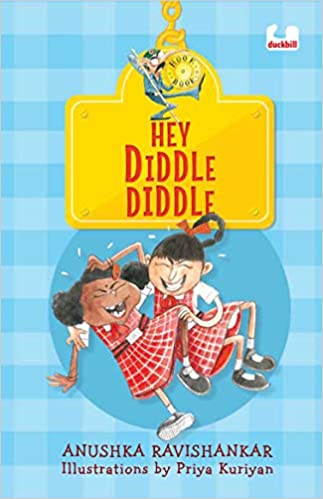Hey Diddle Diddle is classic Anushka Ravishankar, the whimsical literary nonsense approach that actually packs in a lot of sense. Think about it, it’s a story about a well-known nonsense nursery rhyme that comes true, well, almost. The cow may not have jumped over the moon but it certainly jumped, and in jumping it repaired the friendship between two little girls. Taking its cue from the nursery rhyme that is an early example of literary nonsense, the story is about best friends Minootty and Susie, and Minootty’s cow that she calls Susie. However, Susie, who has moved recently from Dubai does not see this as a symbol of affection, cows are stupid, she says, it should have been a horse at the very least! How will the girls overcome this sore point of conflict? The story shows us this in a delightful way!
Some readers may understand the setting as rural Kerala because of the reference to the landscape, the farm, the use of words like Acha and Amma, the banana and palm trees in Priya Kuriyan’s quirky illustrations, and Susie’s move from Dubai. But even if you don’t, the book presents a context that is one kind of Indian, and refreshingly not an urban Indian setting that most of our English children’s books find themselves in.This ability to write from one’s own context in an unselfconscious way is actually what supports the spine of this short story. Most Indian school children grow up learning quintessentially English things in school with little room for finding connections to them. Hey Diddle Diddle shows us that we can make them our own just like Ravishankar’s use of the English language is completely her own. It transplants an English nursery rhyme to a specifically Indian context, making its characters engage with the poem through their lived experiences. But this is not the focus of the book, it is simply a layer in the writing that a reader can choose to unpeel or choose to experience in a subconscious way. The focus of the story is universal ideas and experiences that can resonate with children everywhere.

